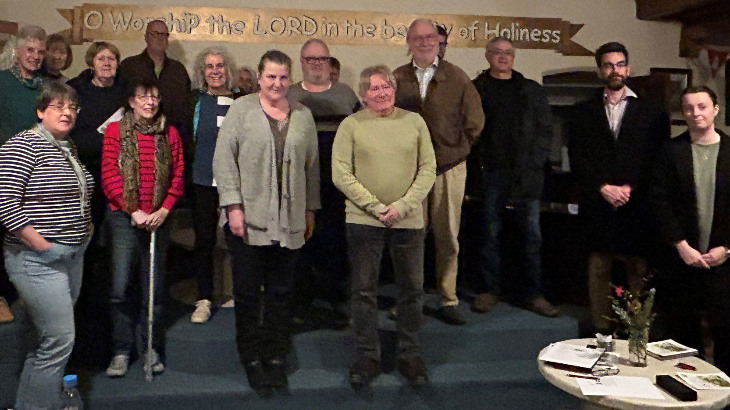Hackleton WEB

CA-WN were recently invited to attend a meeting of Hackleton WEB group (Wildlife, Environment and Biodiversity). This summary of the event is written by Stephen Clarke, WNC Councillor for Grange Park and Hackleton ward, and reproduced with his kind permission from his Facebook page.
On 5 March 2024, I attended the Hackleton Wildlife, Environment and Biodiversity (WEB) Group meeting at Carey Chapel, Hackleton. They meet to discuss the effects of climate change on their local environment and wellbeing. They explore what is happening locally and nationally and consider how they might be able to change things.
The group includes members from Hackleton School, Litter Wombles, WI, Parish Council, Longland Meadow, The Scouts and the Churchyard Group as well as those who work in food production, buildings sustainability and farming. They are all united in wanting to reduce the negative effects of climate change and to increase wildlife, biodiversity and wellbeing.
We had an update from each of the Groups and Roy Hawkesford told us about the Big Plastic Count which takes place on 11-17 March 2024. Nearly 100 billion pieces of plastic packaging are thrown away by UK households every year, and just 12% is recycled in the UK. So we are being encouraged to use their count tally sheet to record any plastic we use. At the end of the week we submit our results which must all be in by 31 March 2024. Maz Woolley shared the new logo and strapline for the group which was work in progress.
During the evening, we had a presentation from Jane Wood and Harry Mellor from Climate Action-West Northamptonshire (CA-WN) who outlined what they do, and what is happening elsewhere. We heard about their program to assess air quality with their own meters and how this works together with WNC’s Air Quality Meters.
Harry told us about the troposphere, which is the lowest layer of the Earth's atmosphere. Most of the mass (about 75-80%) of the atmosphere is in the troposphere. Most types of clouds are found in the troposphere, and almost all weather occurs within this layer. The troposphere is by far the wettest layer of the atmosphere (all of the other layers contain very little moisture). The bottom of the troposphere is at the Earth's surface and extends upward to about 10 km (6.2 miles or about 33,000 feet) above sea level. No more than you might cycle in a day Harry said. So why is it important? The troposphere is very sensitive to processes occurring at this level, like: evaporation of oceans, photosynthesis in plants, respiration of living creatures and human activities. Over the last 40 years, the boundary between the troposphere and the neighbouring stratosphere has risen as a result of climate change.
Jane handed out a helpful booklet on how to create a re-wilded space entitled ‘CLAIM BACK YOUR SPACE: WORKING WITH NATURE’-Start up notes for small projects written by Brian Webster, Ecologist and illustrated by Clare Robertson-Marriott*.
Roy told us about the Parish Council initiative to distribute a pack of wildflower seeds with the Parish Magazine this month. This gift of seeds is to enhance Hackleton gardens with natural beauty and to promote biodiversity and attract wildlife.
Thank you Jane and Harry for a very interesting and informative session. Indeed you gave us much food for thought. A special thank you to Roy, the WEB Group and the Parish Council for all they are doing to make a difference to our Local Environment. If you would like to make a difference too, please come along to his next meeting. I know you will be most welcome. For more information email: royhawkesford@gmail.com
*Claim Back Your Space is available digitally on CA-WN Exchange https://exchange.ca-wn.org/claim-back-your-space-3/
